28.7 DNA Synthesis
The ongoing revolution in molecular biology has brought with it an increased demand for the efficient chemical synthesis of short DNA segments, called oligonucleotides, or simply oligos. The problems of DNA synthesis are similar to those of peptide synthesis (Section 26.7) but are more difficult because of the complexity of the nucleotide monomers. Each nucleotide has multiple reactive sites that must be selectively protected and deprotected at specific times, and coupling of the four nucleotides must be carried out in the proper sequence. Automated DNA synthesizers are available, however, that allow the fast and reliable synthesis of DNA segments up to 200 nucleotides in length.
DNA synthesizers operate on a principle similar to that of the Merrifield solid-phase peptide synthesizer (Section 26.8). In essence, a protected nucleotide is covalently bonded to a solid support, and one nucleotide at a time is added to the growing chain by the use of a coupling reagent. After the final nucleotide has been added, all the protecting groups are removed and the synthetic DNA is cleaved from the solid support. Five steps are needed:
STEP 1
The first step in DNA synthesis is to attach a protected deoxynucleoside to a silica (SiO2) support by an ester linkage to the 3′ –OH group of the deoxynucleoside. Both the 5′ –OH group on the sugar and free –NH2 groups on the heterocyclic bases must be protected.
Adenine and cytosine bases are protected by benzoyl groups, guanine is protected by an isobutyryl group, and thymine requires no protection. The deoxyribose 5′ –OH is protected as its p-dimethoxytrityl (DMT) ether.
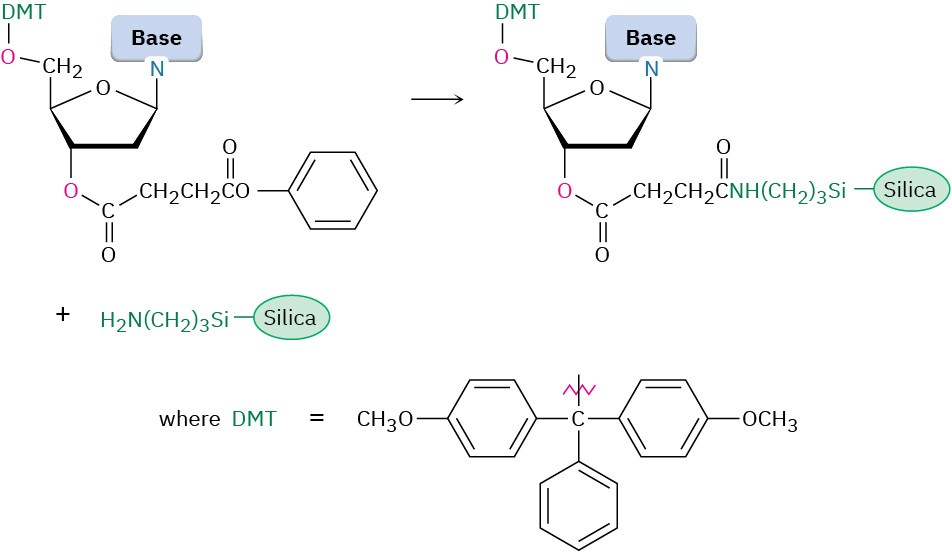

STEP 2
The second step is removal of the DMT protecting group by treatment with dichloroacetic acid in CH2Cl2. The reaction occurs by an SN1 mechanism and proceeds rapidly because of the stability of the tertiary, benzylic dimethoxytrityl cation.
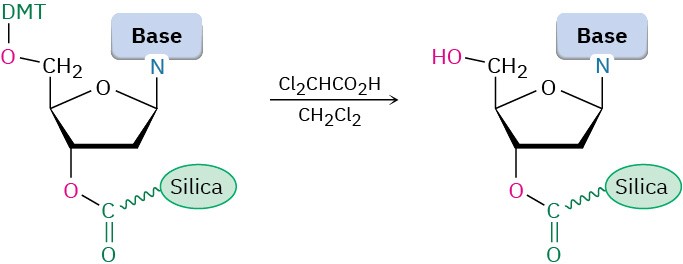
STEP 3
The third step is the coupling of the polymer-bonded deoxynucleoside with a protected deoxynucleoside containing a phosphoramidite group [R2NP(OR)2] at its 3′ position. The coupling reaction takes place in the polar aprotic solvent acetonitrile, requires catalysis by the heterocyclic amine tetrazole, and yields a phosphite, P(OR)3, as product. Note that one of the phosphorus oxygen atoms is protected by a β-cyanoethyl group, – OCH!CH!C≡N. The coupling step takes place with better than 99% yield.
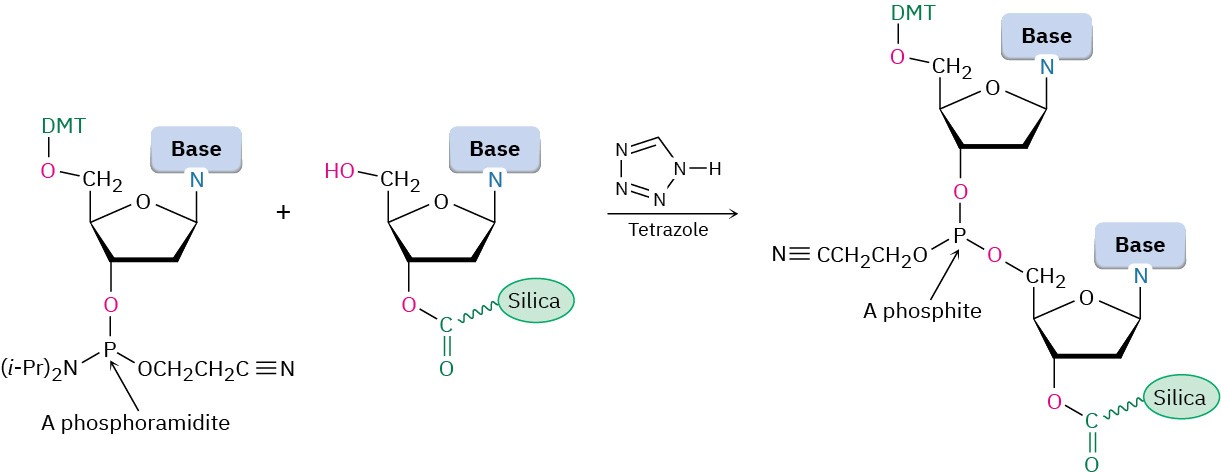
STEP 4
With the coupling accomplished, the phosphite product is oxidized to a phosphate by treatment with iodine in aqueous tetrahydrofuran in the presence of 2,6-dimethylpyridine.
The cycle of (1) deprotection, (2) coupling, and (3) oxidation is then repeated until an oligonucleotide chain of the desired sequence has been constructed.
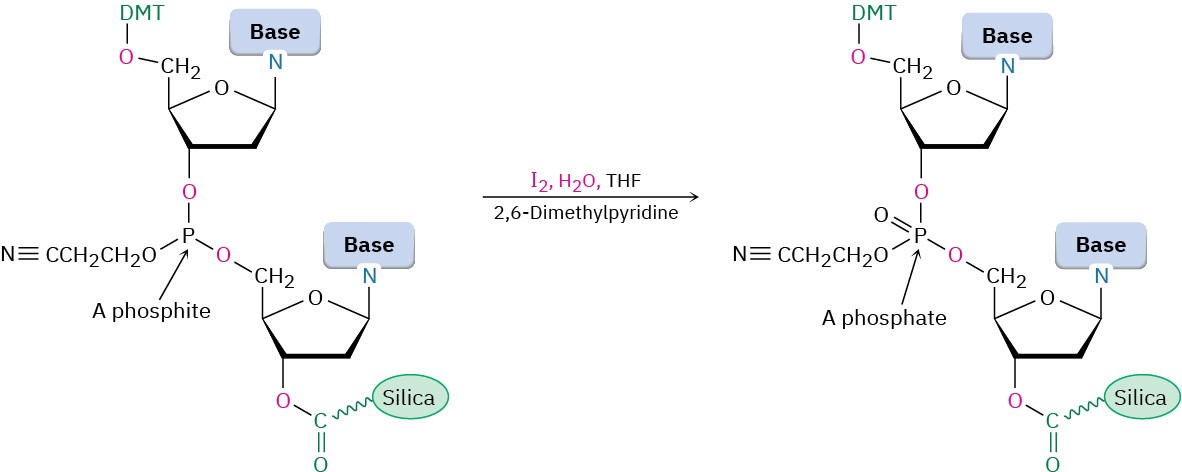
STEP 5
The final step is removal of all protecting groups and cleavage of the ester bond holding the DNA to the silica. All these reactions are done at the same time by treatment with aqueous NH3. Purification by electrophoresis then yields the synthetic DNA.
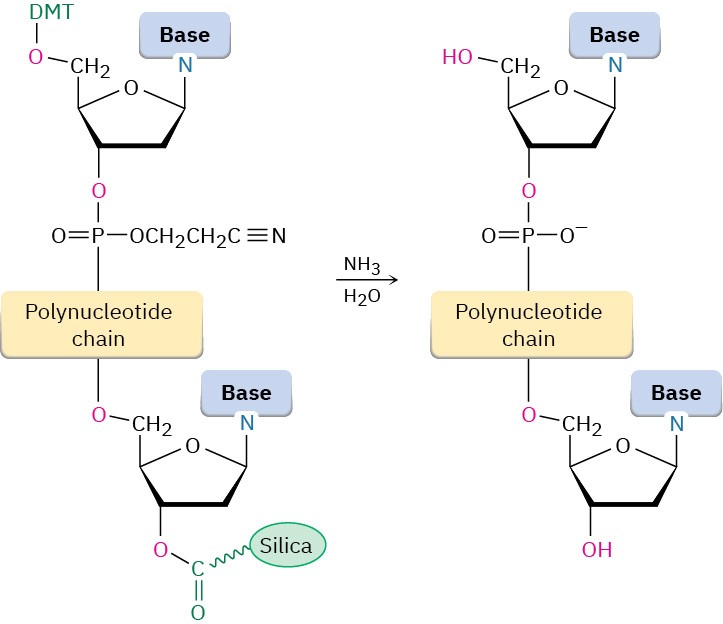
Problem 28-11
p-Dimethoxytrityl (DMT) ethers are easily cleaved by mild acid treatment. Show the mechanism of the cleavage reaction.
Problem 28-12
Propose a mechanism to account for cleavage of the β-cyanoethyl protecting group from the phosphate groups on treatment with aqueous ammonia. (Acrylonitrile, H2C═CHCN, is a by-product.) What kind of reaction is occurring?

